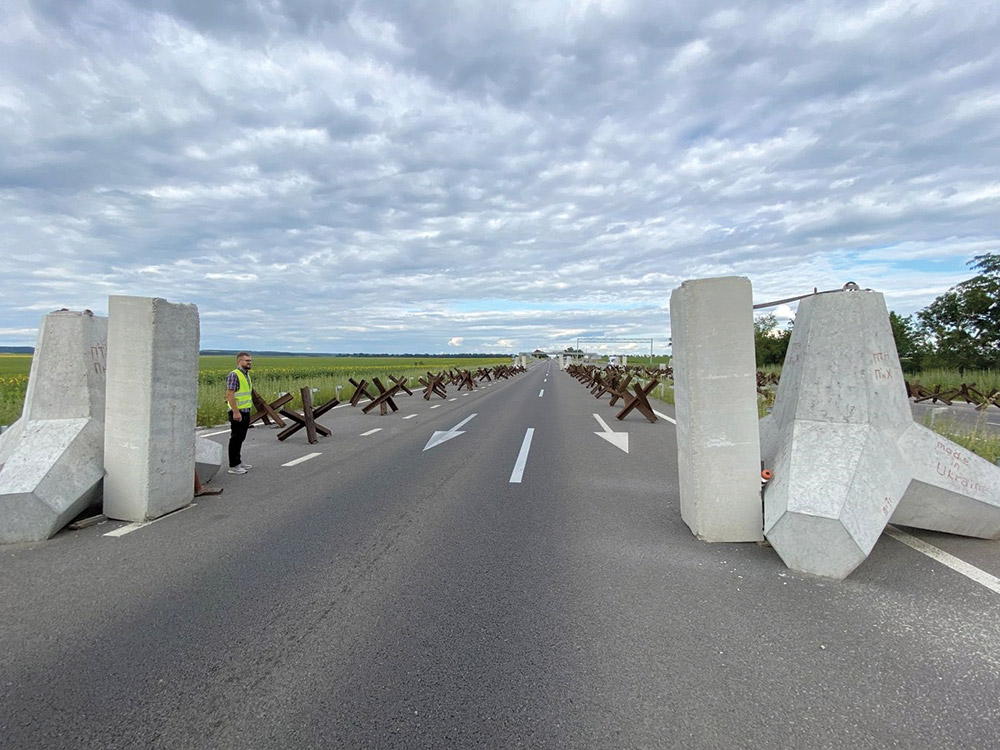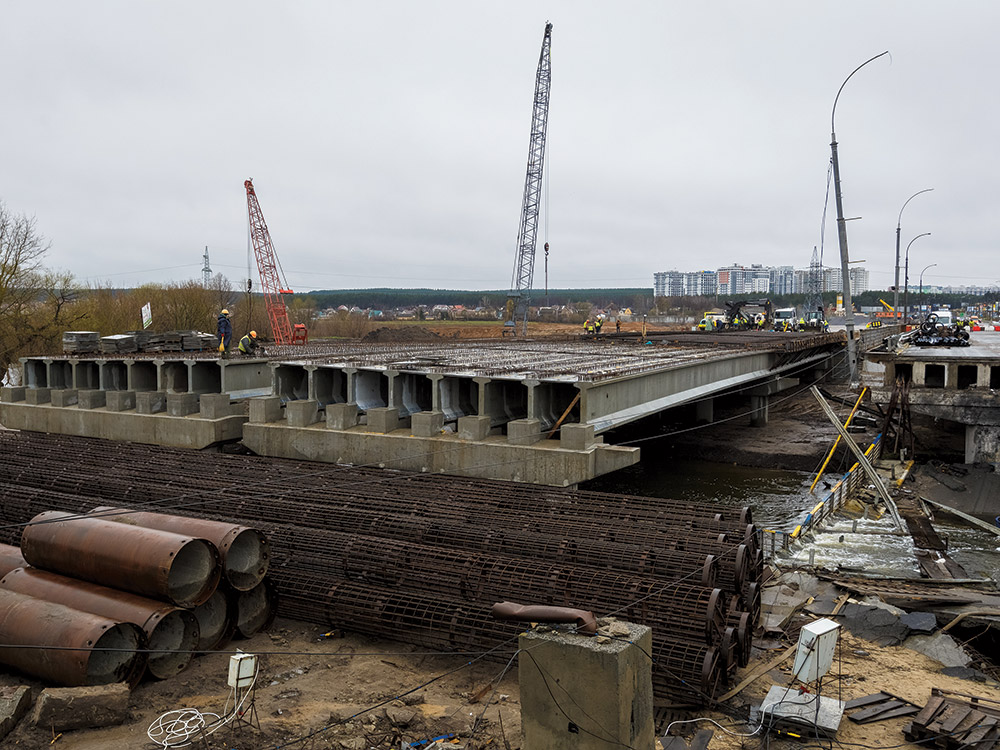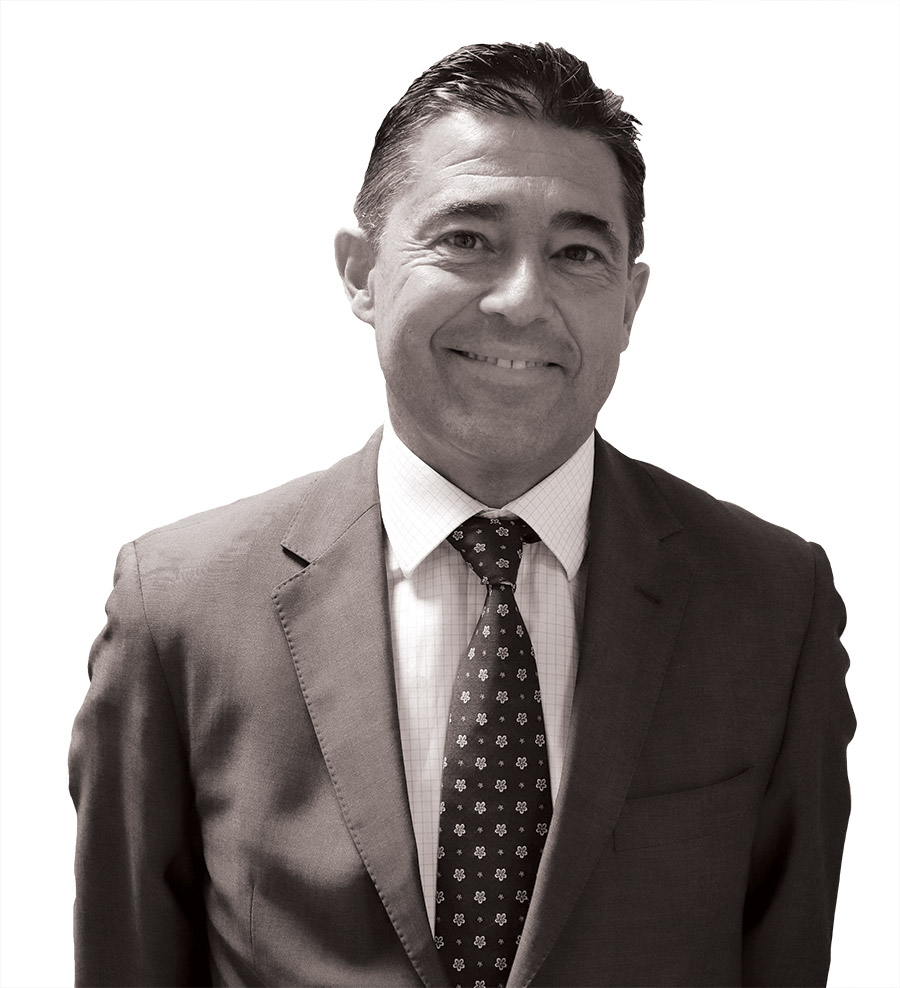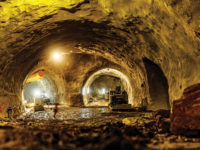2024 ENR Top 250 International Contractors: Contractors Balance Higher Risks
September 11, 2024
2024 ENR Top 250 International Contractors: Contractors Balance Higher Risks
September 11, 2024The Arab Contractors is part of the JV building the Cairo Monorail in Egypt. It will be the longest driverless monorail system in the world, the firm says.
Photo courtesy the Arab Contractors (Osman Ahmed Osman & CO.)
Related Links:
ENR 2024 Top 250 International Contractors
ENR 2024 Top 250 Global Contractors
View complete 2024 list, with full market analysis
(Subscription Required)
Revenue for the Top 250 International Contractors is at its highest since 2015, rising 16.6% to $499.7 billion last year. Yet amid still intensifying effects of regional conflicts, supply chain disruptions and cost escalation, projects toe a thin line between shovel-ready and shelved. To reduce risks and diversify operations, contractors are proactively shoring up key markets with resource investments.
Overall, new project contract value for Top 250 International Contractors rose 15.1%. Of the 237 international contractors that filed surveys for both the 2023 and 2024 rankings, 63% said revenue increased. Among contractors ranking in 2024 that reported on backlog, 54% said it was up, and of 165 firms reporting profit-loss trends in international construction, 92.7% said their firms were profitable.
In survey comments, Top 250 contractors shared that ongoing geopolitical challenges are boosting project risks, slowing construction activity in some markets but also creating hotbeds of activity in others.
After the COVID-19 pandemic, construction costs have “significantly increased all over the world,” says Mustafa Toprak, CEO of Istanbul-based contractor Esta Insaat Sanayi Lojistik ve Dis Ticaret AS, which is No. 87-ranked.
In response to higher prices, he says the company's “construction markets have dramatically contracted” and that “obtaining qualitative manpower … has been more difficult than before.” The contractor is now investigating new markets such as southeast Asia and Africa, “for obtaining manpower and getting new projects,” Toprak points out. “We have been revising our current budgets with current clients.”
Regional Hot Spots
Top 250 contractors increased their revenue in nearly all regions, including the Middle East (28.8%), the U.S. (27.9%), Latin America (27.3%), and Australia (21%), but Canadian revenue was virtually flat, at 0.3% growth.
Urbacon Trading and Contracting, ranked No. 42, named Iraq, Kazakhstan, Libya and Latin America as some of its emerging markets.
“In these regions, [the firm] has ventured into comprehensive infrastructure development, oil and gas, energy and hospitality sectors,” says Mohd Sabri, CEO of UCC Holding. “As a contractor but also as an investor, this dual role underscores [our] commitment to long-term growth and regional development.”
Doha, Qatar-based UCC is the country’s largest contractor, and its central location in the Persian Gulf has enabled it to tap into larger Middle East markets.
The firm is actively involved in building new infrastructure, entertainment complexes, hotels and office buildings in Saudi Arabia linked to its Vision 2030 initiative, says Sabri. With a mix of “mega” and “giga” projects, some analysts estimate a construction market valued at more than $1.25 trillion, as the country looks to reduce its dependence on oil profits.
Urbacon Trading and Contracting’s success in international general contracting “is largely driven by its expertise in delivering complex projects that integrate master planning with infrastructure and building construction—particularly in hospitality and entertainment sectors,” says Sabri, who notes its experience handling large-scale projects for the 2022 soccer World Cup in Qatar.
COMSA Corporación, ranked at No. 150, cites the commitment to rail by Latin America and Europe as a growth driver for the company.
“We have a century of specialization in this field,” says Guillermo Lorenzo, firm CEO for infrastructures, engineering and services. He points to Mexico’s ongoing Tren Maya rail project, with an estimated cost as much as $30 billion, as a “clear example that the future of mobility depends on development of railway infrastructures.” COMSA was also awarded a project to rehabilitate 14.9 km of Mexico’s Ferrocarril del Istmo rail line through Oaxaca, a project that will be executed with Grupo Constructor Diamante.
Lorenzo also notes “Portugal’s impulse for this type of infrastructure, with the tendering and execution of new railway lines,” naming the extension of Lisbon’s metro via Circular Line as an example, which is being executed by COMSA, with Portuguese engineering and construction company Zagope.
From 2021 to 2023, Top 250 revenue in Latin America region has risen 77.2%. Median international revenue reported from contractors working in the region rose 83.4% between 2022 and 2023 to $106.4 million, from $58 million. In 2022, 36 contractors reported international revenue of $100 million or more in the region. That number increased to 45 firms in 2023.
Closing Cultural Gaps
Based in Cairo, Egypt, the Arab Contractors (Osman Ahmed Osman & Co.) says the main scope of its international work is in African and Middle East countries. “However, we’re striving to penetrate new countries in Asia right now,” says board member Ahmed El Adalany, adding that breaking into new sectors can be “rife with challenges” for contractors that require large labor forces.
He notes need for “detailed feasibility studies before the penetration of any construction market, understanding the political and economic conditions inside the country and determining the risks you are going to go through to ensure business continuity, or else predicted losses will happen,” says El Adalany.
He said the country has frequently faced challenges obtaining necessary funding for project engineering, procurement, construction and financing, as well as for public-private partnerships or build-operate-transfer projects in African countries such as Senegal, Botswana, Tanzania and Ivory Coast.

“We recognize that international projects present distinct challenges compared to our established operations.”
Khaled Ibrahim, Chairman, Managing Director, Egyptian Maintenance Co.
Firms note the promise of the African market as outlined in the African Agenda 2063—the continent’s 50-year master plan to inclusively improve its socio-economic development. “However, the region is so challenging due to the current situation there,” says Khaled Ibrahim, chairman and managing director of Egyptian Maintenance Co., pointing to issues of political and market instability. The contractor, ranked at No. 228 this year, says it is on a “mission to become a leading integrated service provider” across Africa and the Middle East.
“As we strategically expand our geographical presence, we recognize that international projects present distinct challenges compared to our established operations in Egypt,” says Ibrahim.
Among the firm's major challenges, he named increased risk of cost delays and project cancellations due to geopolitical and economic instability caused by civil wars and natural disasters.
In Ukraine, the ongoing war with Russia has reshaped operations and project timelines for No. 178-ranked Onur, says Baturay Konak, director of operations of the Turkey-based firm (see story below). “Despite the war’s challenges, including constant sirens and heightened security concerns, we have maintained our presence and continued to support the local community and authorities."
Delays in training skilled labor, complex safety and quality compliance requirements and cultural barriers can also be a challenge in areas of geopolitical instability. To build good relationships with stakeholders across Africa and realize new opportunities on the ground, Arab Contractors’ executives have made successive visits to study and present business development opportunities in the region.
“One of the challenges also is the diversity,” says El Adalany, explaining that the contractor “has to deal with wide spectrum of culture in these countries.” He added, “As one of the leading companies in the Middle East, [Arab Contractors] exerts massive effort in identification of ideal ways to apply the principle of diversity and inclusion by keeping communication channels with all, as well as by considering this issue as a top priority in [our] business strategy and the cornerstone of building reliable relationships with clients.”
Infrastructure | By Jonathan Keller
Global Contractor Onur Sticks It Out Amid Chaos in Ukraine



In 2021, 19 of ENR’s Top 250 International Contractors reported having done work in Ukraine. This year, that number has fallen to 10. One firm that has maintained its presence in the war-torn country is Onur (No. 178). “We have been operating in Ukraine since 2003, and over the years, we've evolved from an international company to almost a local entity,” says Baturay Konak, director of operations.
Prior to the conflict, Turkey-based Onur employed up to 10,000 workers in Ukraine but now has cut back to 3,500, says Konak. Even so, labor shortages pose a significant project challenge. Local labor pools have dried up with so many Ukrainians serving in the military. “To address this, we have obtained special permits from the government for those working on our projects, many of which are of critical importance to Ukraine's infrastructure,” adds Konak.
With the extent of the war zone only limited by the range of ballistic missiles, air raid sirens frequently disrupt daily operations. Onur provides secure shelters at all construction sites to ensure employee safety. In the case of unexploded ordnance or other hazards, all work is halted and teams liaise with the regional Ukrainian emergency and rescue services to remove the danger. Although some of its work has been damaged by missile attacks, the firm reports no casualties.
Onur has 40 ongoing contracts with the Ukrainian government, totalling around $900 million—largely vital electrical and transportation infrastructure work, it says. Another 100 contracts, totalling nearly $2 billion, are suspended due to the conflict.
While most of the company's work is publicly funded, there are still privately financed projects to be had, focusing mostly on renewable energy infrastructure, residential buildings and private hospitals, Konak says. In some cases, Onur is undertaking these projects as part of its own investments, particularly in the industrial and energy sectors, with an eye toward Ukraine's postwar recovery. In January, the firm announced it would invest an additional $500 million by 2030, doubling its current level.
Securing funding for projects and day-to-day operations has been complicated. On Feb. 24, 2022, when Russia invaded, the National Bank of Ukraine issued Board Resolution No. 18, which restricted the flow of funds out of the country. “With over 7,000 heavy machinery units, our strength lies in our ability to maintain and refurbish our own equipment. This requires a substantial head office operation cost, which must be supported by all company branches,” says Konak. “Due to the previous restrictions, we were unable to provide this support from our Ukrainian operations for two years.” Recent legislation allowing for repayment of financial support by parent companies has eased that burden, he adds.



Photos courtesy of Onur Group
Managing Risks and Rewards
In Egypt, the last few years have been marked by an unstable currency exchange rate that has slowed construction activity, says Arab Contractors’ El Adalany. “The situation has started to improve recently, when the Egyptian government liberalized the exchange rate and set the price of the pound at a fair rate,” which eliminated the currency black market and stabilized prices, he says. “This has resulted in greater financial stability for the company, along with an increase in workload and revenue.”
As workloads increase, Top 250 firms say proactive safety plans, secured material prices, communication with partners and maintaining execution deadlines are key to keeping costs and risks low and backlogs high.
“The international market is characterized by strict compliance regarding execution deadlines, while at the same time it has a payment model that contemplates advance payments, which favors the contractor’s activity,” says COMSA’s Lorenzo. “However, international price revision mechanisms are more rigid than at the national level, so coping with the increase in the cost of materials can sometimes be a real challenge.”
Egyptian Maintenance Co. credits “robust vendor management” for helping the firm navigate supply chain disruptions on a recent power generation project caused by the Russia-Ukraine war. “The project team prioritized building strong partnerships with key suppliers, diversifying the supply chain and implementing comprehensive contingency plans,” says Ibrahim. “By closely monitoring supplier performance, accelerating procurement processes and developing detailed business continuity plans, the project effectively mitigated risks and ensured project success.”
Says the executive: “This experience underscores the critical role of proactive vendor management in overcoming supply chain challenges and achieving project objectives.”
Adding to international market risks are disruptions still stemming from the pandemic, which have become seasonal in some regions with infection flareups.
“The risk of epidemic has emerged all over the world,” says Miraç Caner Batur, board of directors vice chairman for Duygu Group, ranked at No. 199. “In addition, it is possible that the countries may be dragged into internal turmoil, suffer terrorist attacks or become at war with other countries,” he adds, which puts “serious pressure on us as contractors."
For emergencies, Batur says the contractor has developed a series of safety exit plans, of varying levels, to move employees and construction assets out of danger. “These plans are evaluated and developed separately according to the risks in the countries where the tender is made and construction begins,” says Batur.
Similarly, Sembol’s health, safety and environment “management system manual” helps synthesize jobsite safety and environmental support procedures for its international teams.
The firm says the objective is to provide a “risk-based framework” consistent with the contractor’s quality policies in these areas and “provide a basis for continual improvement.”
The Istanbul-based contractor explains that each project or work location prepares its own plan that can include relevant needs, legal and compliance requirements and expectations for project stakeholders. Such a plan also enables the contractor to ensure timely delivery and quality sourcing of project materials.

“For us, occupational health and safety puts in added value towards our performance and winning new contracts.”
José Manuel Loureda, General Manager, Sacyr
“Our main strategic elements include the detailed planning of material supply periods by controlling … production processes [with] our professional staff and organizing and managing logistics-transportation processes,” says Sembol. “It is aimed to accelerate material selections and finalize supply processes as soon as possible by considering all logistics alternatives.”
Sacyr, ranked at No. 36, says the company is continuously implementing technologies to raise its safety standards. “Occupational health and safety puts in added value towards our performance and winning new contracts,” says José Manuel Loureda, the firm business development general manager. “Our commitment to sustainability in all areas has yielded an excellent environmental performance.”
To ensure timely delivery of material supply, Loureda says the contractor works closely with its planning, purchasing and procurement teams “right off the bidding to assess the best suppliers.” This includes assessing risks for possible deviations to secure, appeal and clarify purchases in advance to prevent project delays.
“In terms of quality, we collaborate with consultants and specialists to define review processes that ensure that project requirements are incorporated into our work,” says Loureda, explaining that the contractor has a supply chain management policy—with strict labor, environmental, social, human rights and anti-corruption requirements for its suppliers.
“We are also committed to hiring local suppliers based in the same country as the project, with a 98.4% rate,” says Loureda, adding that Sacyr analyzes supplier environmental performance.
“In 2023, we analyzed close to 1,400 suppliers,” he adds.
Mass Transit & Rail | By Jonathan Keller
Team Reaches Tunneling Milestone

Photo courtesy of Ghella
Ghella (No. 74) along with Aecon and Dragados, is working on the 9.2-km Eglinton Crosstown West Extension between Toronto and Mississauga, Ontario, in Canada. In June, twin tunnel boring machines Rexy and Renny finished excavating the 6.3-km western underground section, the firm reports. The completed line will connect to five regional transportation lines.
Sharpening Skills
With efforts to cultivate external resources, Top 250 International Firms also report investing in their in-house teams— implementing technology and reconfiguring operations to better train employees and subcontractors to increase efficiency and reduce waste.
Over the last decade, the addition of a research and development department in Ghella SpA’s tunnel division has helped the contractor develop new equipment, structures and test materials before they are deployed to jobsites. The aim is to improve safety and reduce carbon dioxide emissions, says Massimo Maffucci, who is the firm's division manager for overseas tunnels.
Among its research and development innovations are a “pushing frame structure” for launching tunnel boring machines in confined spaces and a “pressure breakout vessel” that prevents “settlement or leakage during breakthroughs in challenging conditions,” he points out.
“Additionally, for backfilling gaps, we employ mix designs using cement-free binders or alternative cement and binder mixtures,” says Maffucci. In 2018, the contractor established TunnelPro, a company specializing in the design of tunnel boring machines and ancillary equipment. The next year it incorporated DrillPac, a jet-grouting technology.
In anticipating what skills or technologies the company believes will be most impactful in the future of contracting, Maffucci says the question “is a complex one.” The executive says Ghella is “actively working internally and with our consultants and suppliers to integrate artificial intelligence, automation and robotics into our business. Our goals are to enhance the quality of our operations, improve the safety of our workforce and significantly reduce the number of resources required for our underground projects.” He adds that the initiative “aims to streamline processes and achieve greater efficiency in our work.”
Next Generation
To fill the workforce gap, No. 34-ranked PCL Construction collaborates with local schools and post-secondary institutions in Australia, Canada and the U.S. to promote careers in construction.
“This includes presentations, hands-on experiences and significant investment in scholarships to build a skilled labor pipeline,” says Chris Gower, deputy CEO of the Canada-based contractor. In addition to offering more than 800 interns real-world experience in the construction industry and in their area of university-level study, the contractor offers over 300 apprenticeships that combine classroom learning and on-the-job training.
“Future construction teams will need to blend traditional expertise with advanced technical skills and innovative technology,” Gower says, such as building information modeling, digital twins, drones, augmented reality and construction supported by the Internet of Things.
But effective communication, leadership and negotiation are core skills that “will continue to be vital,” adds Gower. They “facilitate effective team collaboration, conflict management and maintenance of strong relationships.”
With growing project pressure and continued work in areas of conflict and disaster, international contractors must rely even more on such skills. “In an ideal world, no one would need to work under war conditions,” Onur’s Konak says. “Companies that possess deep local expertise are better positioned to navigate complexities, mitigate risks and successfully deliver projects. Without this know-how, there is a significant risk of encountering unforeseen challenges that could impact project outcomes, client satisfaction, and overall success.”












